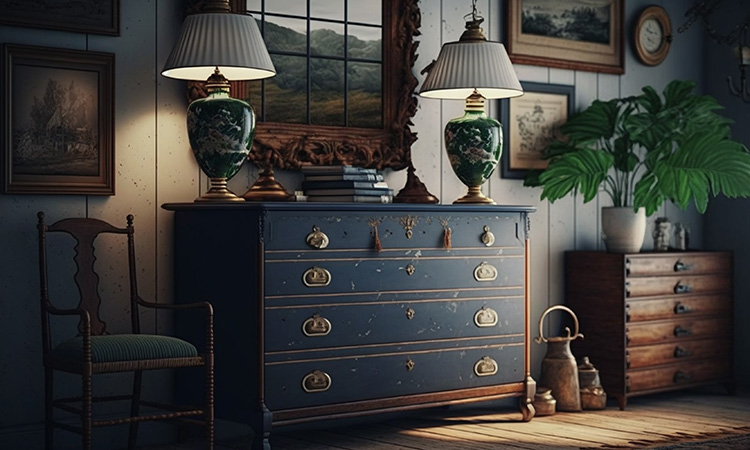
Vintage furniture can add character, charm, and a touch of nostalgia to your home. Whether you’re a seasoned collector or just looking to incorporate a few unique pieces into your decor, choosing the right vintage furniture can be a rewarding endeavour.
In this article, we’ll guide you through the process of selecting the perfect vintage furniture for your home, from understanding different styles to evaluating quality and where to find these timeless treasures.
1. Define Your Style
Before you start your vintage furniture hunt, it’s essential to define your style and the overall aesthetic that you want to achieve in your home. Vintage furniture spans a wide range of eras and design styles, from mid-century modern to Victorian, Art Deco, and more. Take some time to research and identify the style that resonates with you the most. This will help you to narrow down your options and make your search more focused.
2. Research and Educate Yourself
Becoming knowledgeable about vintage furniture is crucial when you’re on the hunt for the perfect pieces. Research different styles, materials, and designers associated with the era you’re interested in. Understanding the history and characteristics of vintage furniture will enable you to make informed decisions and recognise valuable pieces when you come across them.
3. Determine Your Budget
Vintage furniture can vary widely in price, depending on its rarity, condition, and desirability. Before you start shopping, set a budget to make sure you don’t overspend. It’s essential to have a clear idea of what you’re willing to invest in vintage pieces. Keep in mind that quality should be a priority over quantity when building your collection.
4. Assess the Condition
When shopping for vintage furniture, closely examine the condition of each piece. Look for signs of wear, such as scratches, dents, or loose joints. Some wear can add to the charm of a vintage item, but significant damage may affect its usability or value. If you’re handy or willing to invest in restoration, minor imperfections may not be a deal-breaker. However, it’s essential to be realistic about your ability to restore or repair furniture if needed.
5. Authenticity Matters
Verifying the authenticity of a vintage piece is crucial, especially if you’re considering a high-value purchase. Look for the maker’s marks, labels, or signatures on the furniture to confirm its origin. Additionally, you can seek the expertise of antique dealers or appraisers to help you to authenticate valuable items.
6. Shop at Reputable Sources
Finding the right vintage furniture often involves visiting antique stores, estate sales, flea markets, and online marketplaces. Research the best shops to visit for your key pieces, such as visiting The Furniture Rooms online, which is based in Kent. Be sure to choose reputable sellers who have a track record of selling authentic vintage pieces. Ask for references or read reviews from previous customers to make sure you’re dealing with trustworthy sources.
7. Consider Functionality
While vintage furniture can be visually appealing, it’s essential to consider its practicality and functionality within your home. Think about how the piece will fit into your existing decor and whether it serves a useful purpose. A beautiful vintage piece that also fulfils a functional need is a winning combination.
Choosing the right vintage furniture for your home can be a rewarding experience, offering unique character and style to your living spaces. By defining your style, researching, setting a budget, assessing condition, verifying authenticity, shopping at reputable sources, and considering functionality, you can make informed decisions and curate a collection of vintage pieces that enhance your home’s ambience and reflect your personal style.
Remember that patience and perseverance are key when hunting for the perfect vintage furniture, so enjoy the journey of discovery and treasure hunting in the world of vintage decor.

Leave a Reply